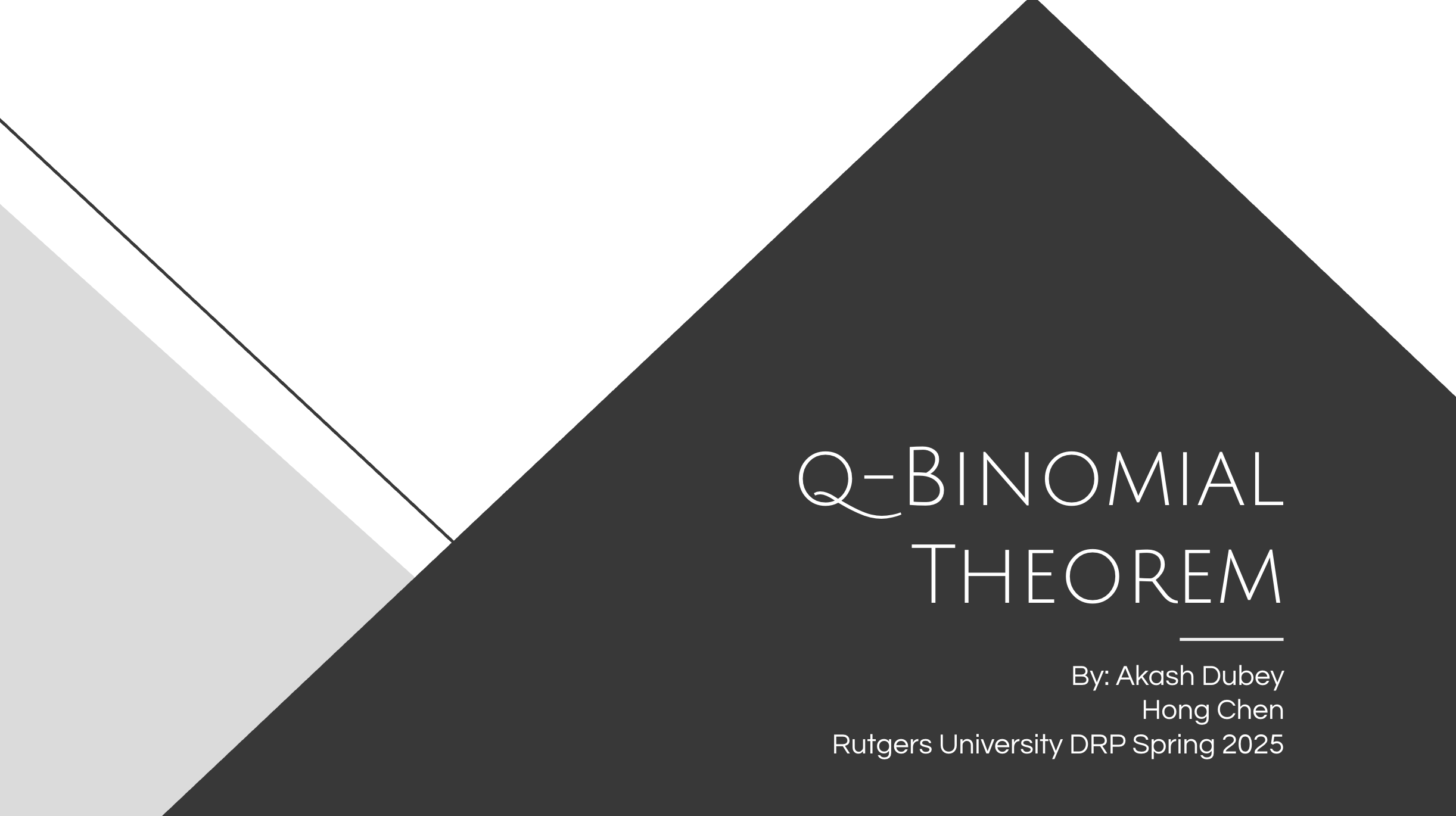q-Binomial Theorem Presentation - Spring 2025 DRP Program

This research project was a deep exploration of the Q-Binomial Theorem, with a foundational focus on the theory of symmetric functions. The primary goal was to understand the algebraic and combinatorial structures that link these two areas of mathematics. The work culminated in a presentation synthesizing the core concepts for the Rutgers University Directed Reading Program (DRP).
Symmetric Functions: The Foundation
A significant portion of this research involved a close reading of the initial chapters of I.G. Macdonald’s classic text, “Symmetric Functions and Hall Polynomials”. This provided the necessary background for the project.
A symmetric function is a function whose value does not change when its variables are permuted. For example, given $g(x_1, x_2) = x_1^2 + x_2^2 + x_1x_2$, the function remains the same if we swap $x_1$ and $x_2$.
The research focused heavily on elementary symmetric functions, denoted as $e_k(x_1, …, x_n)$. These are the building blocks for all symmetric polynomials, meaning any symmetric polynomial can be expressed in terms of them.
- $e_1(x_1, x_2, x_3) = x_1 + x_2 + x_3$
- $e_2(x_1, x_2, x_3) = x_1x_2 + x_1x_3 + x_2x_3$
- $e_3(x_1, x_2, x_3) = x_1x_2x_3$
The generating function for these elementary symmetric polynomials is given by:
\[E(t) = \sum_{r=0}^{\infty} e_r t^r = \prod_{i=1}^{\infty}(1+x_i t)\]From Classical to Quantum: Q-Analogues
The project then moved from classical concepts to their generalizations, known as q-analogues. These structures embed an extra parameter, q, to record additional combinatorial data.
- Q-Integer: $[n]_q = \frac{q^n - 1}{q-1} = 1 + q + q^2 + … + q^{n-1}$
- Q-Factorial: $[n]_q! = [1]_q[2]_q…[n]_q$
When q approaches 1, these q-analogues revert to their classical forms (e.g., $[n]_1 = n$ and $[n]_1! = n!$). This generalization leads to the Gaussian (or q-binomial) coefficients: \(\binom{n}{k}_q = \frac{[n]_q!}{[k]_q![n-k]_q!}\)
The Q-Binomial Theorem
The culmination of the research was understanding the Q-Binomial Theorem, which provides a powerful connection between symmetric functions and q-binomial coefficients.
By setting the variables in the generating function for elementary symmetric polynomials to powers of q (i.e., $x_i = q^{i-1}$), we arrive at the theorem: \(E(t) = \prod_{i=0}^{n-1}(1+q^{i}t) = \sum_{r=0}^{n}q^{r(r-1)/2}\binom{n}{r}_q t^r\) This identity elegantly shows that the elementary symmetric function $e_r$ evaluated at $(1, q, …, q^{n-1})$ is precisely the q-binomial coefficient, scaled by a power of q: \(e_r(1, q, ..., q^{n-1}) = q^{r(r-1)/2}\binom{n}{r}_q\)
